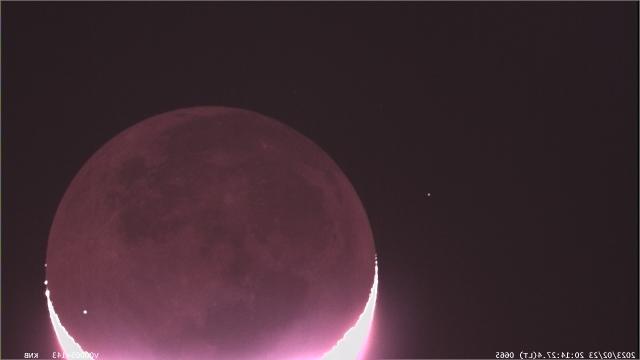The space rock created a brief but brilliant flash that was captured from Earth.
A meteorite striking the moon caused a short flash on its nightside, which a Japanese astronomer was able to photograph.
Daichi Fujii, curator of the Hiratsuka City Museum, recorded the event using cameras positioned to monitor the moon.
The explosion occurred on February 23 at 20:14:30.8 Japan Standard Time (7:14 a.m. EST, or 1114 GMT). According to Fujii, the meteorite appears to have hit close to Ideler L crater, which is located slightly to the northwest of Pitiscus crater.
Approximately 30,000 mph (48,280 kph), or 8.3 miles per second (13.4 km/s), is the typical speed of meteors. Intense heat and craters are produced by their high-velocity collisions, and a brilliant visible light flash is also released. If moon impacts are significant enough and take place in a region that faces Earth during lunar night, they can be seen from Earth, as shown in the image above.

According to Fujii, the recently formed crater may have a diameter of about 12 meters (39 feet) and could one day be photographed by either Chandrayaan 2 or N.A.S.A’s Lunar Reconnaissance Orbiter.
While meteors collide with Earth every day, the vast majority of these burn up completely on contact with the atmosphere. The moon, however, has only a very tenuous exosphere, meaning meteors that would not reach Earth’s surface commonly impact the moon, creating its crater-covered appearance. These rocks constantly pound the lunar surface, sometimes breaking it right down to fine particles, or lunar soil.

Capturing these events also has science value, helping scientists learn the rate of impacts on the lunar surface, which is all the more relevant with the U.S. and other countries preparing to send astronauts to the moon.
Soucre: www.space.com








